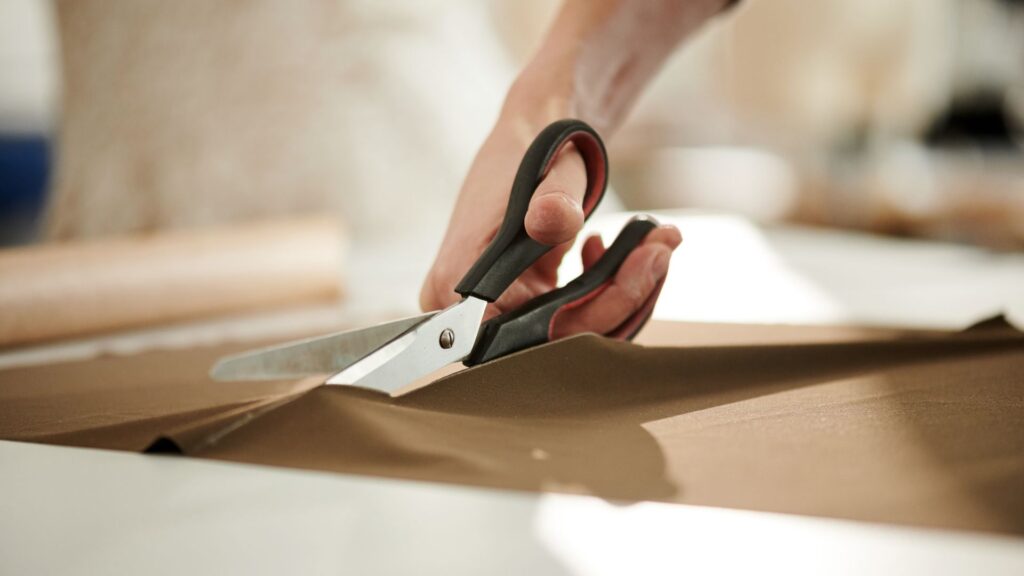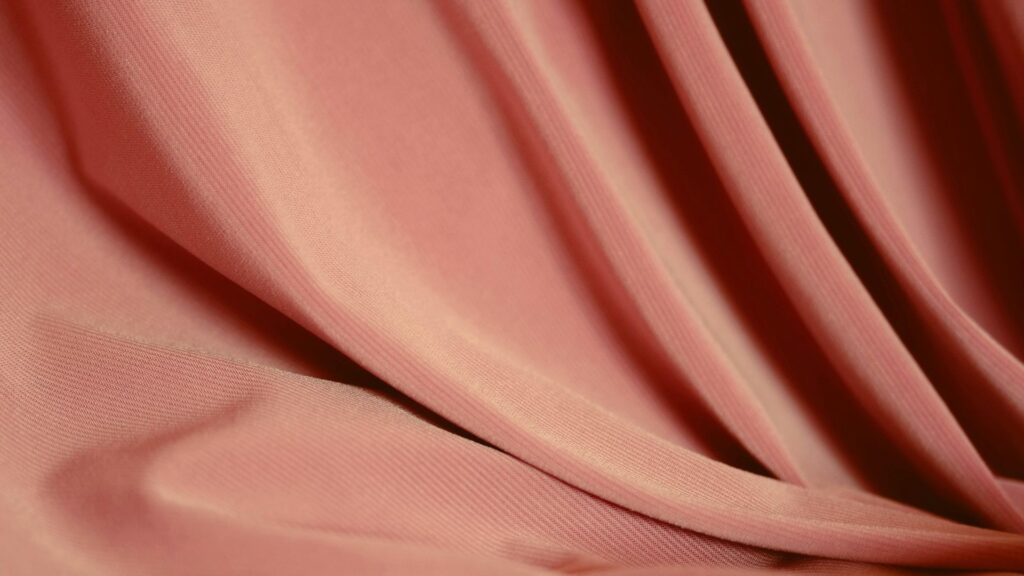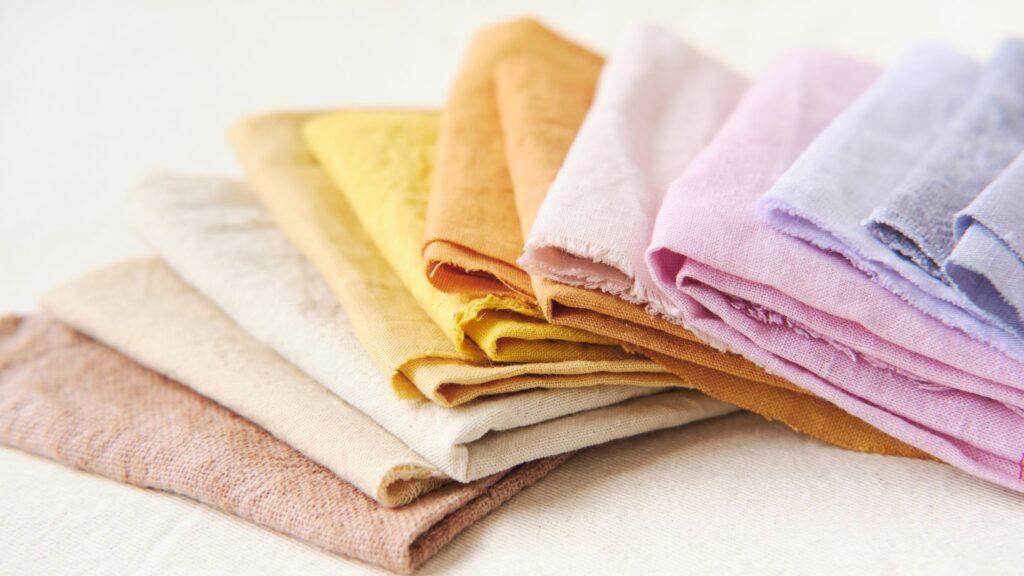The Complete Guide to Upholstery Fabric
14th August, 2025
Upholstery fabric is, in short, the material that covers and cushions furniture so it looks good and lasts well. Now, that might sound simple, yet the choice you make affects comfort, durability, style, and budget. This upholstery fabric guide is, quite honestly, here to make the whole process clearer for you. Professionals and serious DIYers alike will typically find that the right knowledge saves time, money, and stress.
In other words, when you understand fibre types, weaves, and performance tests, you can choose with confidence. For example, you might compare cotton, polyester, velvet, or leatherette and decide which suits a busy family room or a boutique studio. Likewise, you can plan fabric quantities more accurately, which, usually, keeps waste down and projects on track.
This guide takes you step by step through types of upholstery fabric, how to pick the right one, how to measure, how to work with it, and how to care for it so it lasts. At the end of the day, you’ll have practical tips you can use straight away, plus context to judge what is value for your project. If you came here searching for the best upholstery fabric options in the UK, you’ll get to know what to look for and why before you buy.
What Is Upholstery Fabric?

Upholstery fabric is the textile specifically designed for covering furniture, both to enhance its appearance and to protect the structure beneath. It’s the layer you see and touch when you sit on a sofa, lean back in an armchair, or rest against a padded headboard. Unlike standard sewing or craft fabrics, upholstery textiles are woven or manufactured to a much higher durability level to withstand frequent use.
The composition varies widely. Some upholstery fabrics are made from natural fibres, such as cotton, linen, wool, or leather. Others are synthetic, like polyester, acrylic, or nylon, which are often engineered for higher stain resistance and longevity. Blended fabrics combine the best features of each, such as the softness of cotton with the resilience of polyester.
These fabrics also differ in weave and finish. A tight weave helps resist wear, while specialist finishes can add properties such as water resistance, fire retardancy, or UV protection. For example, a heavy cotton twill might suit a country-style armchair in a quiet sitting room, while a treated outdoor fabric could be perfect for a family-friendly sofa in a sunny conservatory.
For professionals, knowing the technical performance of a fabric can make the difference between a project that lasts for decades and one that shows signs of wear after just a year. For DIYers, understanding these differences is just as important – it prevents wasted effort and helps create a result you can be proud of.
Common Types of Upholstery Fabric
Upholstery fabrics come in a broad range of materials, each with its own performance profile, texture, and best use. The right choice depends on the demands of your project, your budget, and the look you’re aiming for. Here’s a closer look at the most common types.
Cotton
Cotton remains one of the most popular upholstery choices thanks to its breathability and comfort. It’s available in countless colours and prints, making it a versatile pick for everything from modern accent chairs to classic sofas. Cotton is naturally soft, yet it can crease easily and absorb liquids quickly unless it’s been treated with a stain-resistant finish. For busy households or high-traffic furniture, a cotton blend may offer a better balance of style and durability.
Polyester
Polyester is valued for its durability, colourfastness, and resistance to wrinkling. Often used in blends, it adds strength to fabrics that might otherwise wear quickly. Pure polyester fabrics can mimic the look of natural fibres while being easier to clean and more resistant to fading in sunlight. This makes them a solid choice for rooms that get a lot of natural light, or for makers producing goods that need to stay vibrant over time.
Acrylic
Acrylic upholstery fabrics have the appearance and warmth of wool, but they’re lighter and more resistant to fading. They’re also quick-drying, making them ideal for outdoor cushions and furniture exposed to direct sunlight. Many outdoor-rated acrylics are treated to resist mildew and stains, which suits both garden seating and indoor pieces in bright conservatories.
Chenille
Chenille’s signature feature is its soft, raised pile, which gives it a luxurious, inviting texture. It works well for cosy armchairs, sofas, and headboards where comfort is as important as appearance. However, the pile can flatten over time, and it may need gentle cleaning to keep it looking its best. Professionals often recommend chenille for statement pieces that benefit from a touch of plushness.
Velvet
Velvet is synonymous with luxury. Its dense, short pile creates rich colour depth and a tactile finish that instantly elevates a piece of furniture. There are durable synthetic velvets available, but traditional cotton velvets can show marks where the pile is brushed in different directions. This makes velvet a stunning choice for formal or decorative furniture, though it’s less suited to high-use family seating unless you opt for a performance version.
Leather and Faux Leather
Leather offers a timeless, high-end finish and is extremely durable if cared for properly. It develops a patina over time, adding to its character. Faux leather, on the other hand, offers a similar look at a lower cost and is available in a wider range of colours and textures. Both real and imitation versions are easy to wipe clean, making them practical for dining chairs, bar stools, and family-friendly seating.
Outdoor and Waterproof Fabrics
Outdoor fabrics are engineered to withstand harsh conditions, from strong sunlight to heavy rain. They are typically water-repellent, UV-stable, and resistant to mould and mildew. These properties also make them useful indoors in homes with pets or young children, where spills and accidents are more likely. For small-business makers, outdoor and waterproof fabrics can expand a product range to include pet beds, garden seating, and family-proof furniture.
In short, each fabric type has its strengths and limitations. By understanding them, you can narrow down your choices early and avoid costly mistakes later in the project.
Natural or Synthetic Upholstery Fabrics

When choosing upholstery fabric, one of the first decisions you’ll face is whether to go with natural fibres, synthetic fibres, or a blend of the two. Each category brings its own set of advantages, and understanding these can save you from selecting a material that doesn’t match your needs.
Natural Fibres
Natural upholstery fabrics are made from plant or animal sources such as cotton, linen, wool, silk, or leather. These materials tend to be breathable and comfortable, offering a tactile quality that synthetic fabrics sometimes struggle to match. Cotton and linen are ideal for relaxed, airy spaces, while wool and leather can bring a warm, rich feel to a room.
However, natural fibres are not always the most hard-wearing choice. They may be more susceptible to fading from sunlight, staining from spills, and wear from heavy use. They also tend to require more careful cleaning, sometimes needing professional attention to keep them in good condition.
Synthetic Fibres
Synthetic fabrics – such as polyester, acrylic, nylon, and olefin – are manufactured to deliver high performance. They are generally more resistant to stains, moisture, and fading, making them a practical option for homes with children, pets, or high traffic. Many synthetics are also budget-friendly and available in a huge variety of finishes, from sleek leatherette to plush velvets.
On the flip side, some synthetics can feel less breathable than their natural counterparts, and cheaper versions may lack the depth of texture and comfort that naturals provide. That said, high-quality synthetics have advanced significantly, often combining the best of both worlds.
Blended Fabrics
Many upholstery fabrics combine natural and synthetic fibres to balance comfort with durability. For example, a cotton-polyester blend can offer the softness of cotton with the stain resistance and resilience of polyester. Blends can also help reduce costs while maintaining a high-quality appearance.
Eco-Friendly Considerations
For buyers who prioritise sustainability, there are eco-friendly upholstery fabrics available in both natural and synthetic forms. Options include organic cotton, recycled polyester, and wool from ethically managed sources. Choosing a sustainable fabric not only supports the environment but also resonates with clients and customers who value responsible production.
Ultimately, whether you choose natural, synthetic, or blended upholstery fabric depends on your priorities – be they comfort, durability, maintenance, or sustainability. Knowing the strengths and weaknesses of each will help you select a fabric that fits both your design vision and the demands of everyday life.
Choosing the Right Fabric for Your Project

Selecting upholstery fabric isn’t just about picking a colour you like – it’s about making sure the material can handle the demands of its intended use while still achieving the look you want. Whether you’re an upholsterer advising a client, a maker sourcing fabric for resale, or a DIYer refreshing a favourite piece, there are a few key factors to keep in mind.
Durability Ratings
One of the most reliable ways to judge a fabric’s durability is the Martindale Rub Test. This measures how many times a fabric can be rubbed in a controlled test before showing signs of wear. For domestic upholstery, a rating of 20,000 rubs or more is generally recommended, while commercial use often requires 40,000 rubs or higher. Heavy-use pieces – such as family sofas or café seating – benefit from fabrics with the highest ratings.
Traffic Levels and Placement
Think about how often the furniture will be used. A decorative armchair in a bedroom will have far less wear than a main sofa in an open-plan living room. High-traffic pieces demand tougher weaves and more resilient fibres, whereas occasional-use furniture offers more freedom to choose delicate or luxury fabrics.
Style and Aesthetic Goals
Fabric plays a central role in the look of a room. A rich velvet can add glamour to a formal lounge, while a textured linen blend suits a rustic or coastal theme. Pattern choice matters too – bold prints can make a statement but may limit flexibility if you redecorate, while neutral tones offer a timeless base that’s easy to accessorise.
Maintenance and Cleaning Needs
Be honest about how much upkeep you’re willing to manage. Some fabrics, like leatherette or high-quality polyester, can be wiped clean, making them ideal for homes with pets or children. Others, like silk or untreated cotton, may require professional cleaning and careful handling to maintain their appearance.
Special Considerations
If the furniture is going near a window or will be used outdoors, UV resistance is important to prevent fading. In households with allergies, fabrics that don’t trap dust easily – or that can be washed – can be worth the investment. For small businesses producing items for sale, consistency of fabric supply is also vital to ensure repeat orders match the original.
How to Measure Fabric for Upholstery Projects
Getting your measurements right is one of the most important parts of an upholstery job. Order too little fabric and you risk running short before you’ve covered the final cushion; order too much and you tie up budget in unused material. Accurate measuring not only saves money but also ensures a professional-looking finish.
Step 1: Break the Furniture into Sections
Rather than measuring the sofa or chair as a whole, treat each component separately – seat cushions, back cushions, arms, back panel, and any decorative elements like buttoned panels or skirts. This approach makes it easier to calculate fabric needs and reduces the risk of underestimating.
Step 2: Measure Each Piece Carefully
Use a flexible tape measure to capture the length and width of each section, adding at least 10 cm to each measurement to allow for seam allowances, stapling, and tucking. For items with curved shapes, measure along the curve rather than in a straight line, as this gives a more accurate figure.
Step 3: Account for Pattern Matching
If your fabric has a pattern – whether it’s stripes, checks, or florals – you’ll need extra to align the design across different sections. A good rule of thumb is to add 20–30% more fabric than your plain-fabric measurement to cover the pattern repeat. Aligning patterns well can make a huge difference to the finished look, especially on larger pieces like sofas.
Step 4: Use Standard Upholstery Fabric Widths
Most upholstery fabrics are wider than standard dressmaking fabrics, typically 137 cm or 54 inches. This width often allows you to cover larger panels without needing a seam down the middle. When planning your cuts, work with the fabric’s width in mind to minimise waste.
Step 5: Typical Fabric Quantities
While every project is unique, these estimates are a useful starting point:
- Dining chair seat pad: 0.5–0.75 metres per seat.
- Armchair: 6–8 metres.
- Two-seater sofa: 12–14 metres.
- Three-seater sofa: 15–18 metres.
Step 6: Order a Little Extra
Even experienced upholsterers sometimes end up with offcuts too small to reuse. A small surplus can be used for matching cushions or future repairs, and it’s far cheaper to add an extra metre to your order than to try sourcing more later – especially if the fabric is a seasonal or limited design.
For more advice, UK Fabrics Online offers guidance alongside its upholstery fabric listings, helping you match fabric type, width, and pattern repeat to your specific project.
Where to Buy Upholstery Fabric in the UK
Finding the right upholstery fabric starts with knowing where to look. While there are plenty of places to buy, the quality, variety, and service can vary greatly, and for many projects, those differences matter just as much as the fabric itself.
Why UK Fabrics Online is the Go-To Choice
For both professionals and serious DIYers, UK Fabrics Online stands out as a trusted supplier. They offer an extensive range of upholstery fabrics – from practical, hard-wearing weaves to high-end statement pieces – all available in clear, easy-to-browse categories. Their fabrics are sourced for both durability and style, meaning you can find something suitable for everything from a commercial seating job to a one-off accent chair.
Trade customers appreciate their competitive pricing, volume discounts, and reliable delivery schedules, while home crafters value the sample service, which allows you to feel and test fabrics before committing. Clear product descriptions, accurate photography, and straightforward ordering make the experience smooth for everyone, whether you’re ordering one metre or an entire roll.
Other Buying Options
Local fabric shops can be great for hands-on browsing, particularly if you want to see colours and textures in person. Specialist upholstery suppliers in some cities offer premium options and advice, but their prices can be higher and selections narrower. Large general fabric retailers may stock a basic upholstery range, but these are often limited in durability or choice.
Online vs In-Store
Buying online gives you access to a much wider selection and often better prices, particularly when ordering in bulk. The key is choosing a supplier with a proven reputation for quality and service – something UK Fabrics Online has built with both repeat trade customers and creative home sewers.
Tips for Working with Upholstery Fabric
Preparation makes all the difference. Use sharp fabric scissors or a rotary cutter for clean edges. When cutting, keep the fabric grain straight to avoid distortion.
Invest in a good staple gun for attaching fabric to frames, and use upholstery needles and strong thread for any hand stitching. Work in a clean, well-lit space, and label each fabric panel before attaching to ensure correct placement.
How to Care for Upholstery Fabric
Care depends on the fabric type. For cotton or polyester blends, vacuum regularly and spot-clean spills promptly. Velvet should be brushed gently to lift the pile, while leather benefits from conditioning treatments to prevent drying.
Consider applying a fabric protector to repel stains, especially on high-use furniture. Always follow the manufacturer’s cleaning instructions to maintain the fabric’s warranty and longevity.
Eco-Friendly and Sustainable Upholstery Options
Sustainable choices include fabrics made from recycled fibres, organic cotton, or responsibly sourced wool. Reupholstering existing furniture is inherently eco-friendly, keeping items out of landfill. You can also repurpose leftover upholstery fabric for smaller projects like cushions or bags.
Design Inspiration: Getting Creative with Upholstery Fabric
Upholstery fabric isn’t just for furniture. It can be used for headboards, wall panels, or even sturdy tote bags. Mixing patterns and textures can add depth to a room – for example, pairing a neutral sofa with boldly patterned armchairs.
Choosing Upholstery Fabric with Confidence
Selecting upholstery fabric is a blend of practical planning and creative vision. By understanding fabric types, durability, and care needs, you can make informed decisions that last. For trusted quality and variety, UK Fabrics Online offers everything you need regarding upholstery fabric to bring your project to life.
Leave a Reply